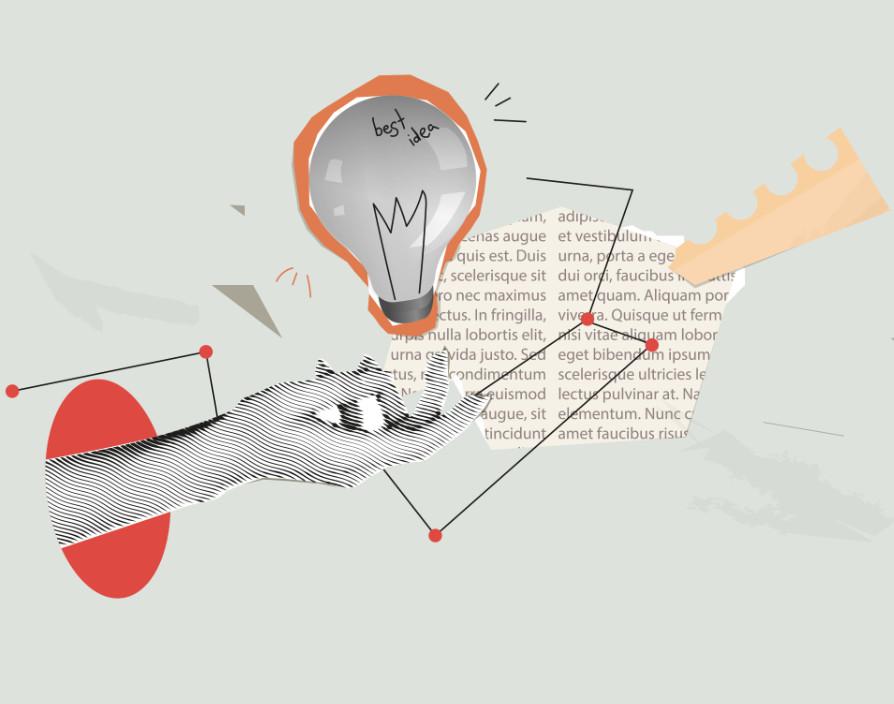I was recently at a conference on the future of food systems. It was a select group of people representing some of the biggest food companies in the world. It was clear that momentum was building, but much was still to be done if we are to feed our growing population of 8 billion, whilst not destroying the planet as we do so. We talked about data collection, regulations, investment, collaborations and best practice, all of which are important, but it seemed there wasn’t enough of something – innovation. It felt like we have the mechanics of change, but not the power to drive it. We need to reinvent. Not just nutrition, but the joy of preparation and eating as well, if we are to balance our diets, save our farmers and planet, redistribute food and reduce our waste. So, if there is this potential why isn’t there a revolution happening?
Looking back at times when big changes happened, it is clear that multiple factors needed to be in place: the need and the funding. However, these in themselves don’t seem to be enough, and other factors must come into play. The Industrial Revolution started in Britain, rather than France or Germany, not because of a proximity of coal or iron ore or money or grand ambition, but because of our society. There was a can-do attitude. A belief in the possibility of something better. Britain’s social structure was relatively integrated for its time – very different from the rigid class structures of continental Europe. Landowners and the aristocracy mixed with the mercantile classes in their clubs and societies and exchanged ideas, pooled their resources, combined their skills – bolstering each other’s ambitions.
As an industrial designer working in San Francisco in the 80s, I witnessed this ‘can do’ attitude in Silicon Valley. Technology was following Moore’s law with computer power doubling every two years, but why did it happen in California and not Cambridgeshire? Both had the required intelligence coming out of Stamford and Cambridge Universities, but it took off in California – Apple we remember, but Apricot Computers we don’t. Again, I believe it was a social alignment that made it happen. There was a sense of excitement and change in the air. The money men, technologists, designers and entrepreneurs shared the same positive vision of the future and fed off each other. In the UK, however, maybe we were distracted by Thatcher’s North Sea oil and the Square Mile expansions.
The Industrial Revolution and dot-com boom were galvanised by opportunity. Yet, still, a shared mission can also come from threat. In times of war, fear is a powerful motivator to work together. Everyday things like acrylic were developed in rapid time in WW2 for the protection of pilots, and the Cold War drove us to extraordinary feats like getting to the moon.
Returning to food, we saw a global revolution post WW2 to provide our burgeoning population with cheap nutritious food. Governments, technologists, farmers, retailers and many more worked together to industrialise farming. This is exemplified by the Cobb 500 – a chicken bred out of a collaboration between the US and UK, that had lighter bones, bigger breasts, faster growth rates and smaller appetites, and is responsible reducing an equivalent price of chicken from £11/kilo in 1967 to £2.50/kilo today.
Much later in the 90s, I moved across from innovating in the world of technology to consumer brands and clearly, the head of steam that started in the 50s had all but run out. Innovation was reduced to inventing a new flavour variants. Things had moved so fast that technology, from GM to E-numbers, had been misused, got a bad name and was no longer a driver. Food brands started to look to their consumers for insights and inspiration, and all we could come up with, from Cadbury’s Smash to Turkey Twizzlers, was convenience and value.
So what now? We have the need – we have billions to feed and we have the threat of a dying planet. We have governments and corporations waking up to the challenge. But do we have that ‘can-do’ attitude. It should be the most exciting place to be working in, but from shrinking glaciers to failed environmental summits, we have been bombarded with bad news about the planet for years. It alerted us to the problem, but it has also set in a certain depressing inevitability about it all. What can we do? Nothing? Wrong! From precision fermentation of food, to highly efficient hydroponic farming, the technology is there for an exciting, responsible and sustainable future.
Just like in the industrial revolution, when a man had to walk in front of the first automobiles with a flag for fear of death and mayhem, we have to get over our fear of the new and embrace it. I can’t wait to try 3D printed insect protein, but who’s going to make it the culinary equivalent of a dry aged T-bone steak, not by replication but by reinvention. I want to get my food custom designed to my metabolism, but who going to provide the bespoke service. Pea protein sounds like a wonderful crop in encouraging regenerative farming, but who’s going to do something more exciting with it than a boring meal replacement shake? Come on entrepreneurs, let’s find our ‘can-do’ mojo and get the ball rolling, this is the most exciting space to work in since the digital revolution. There’s money to be made, the planet to save and delicious food to be had!
Share via:









































